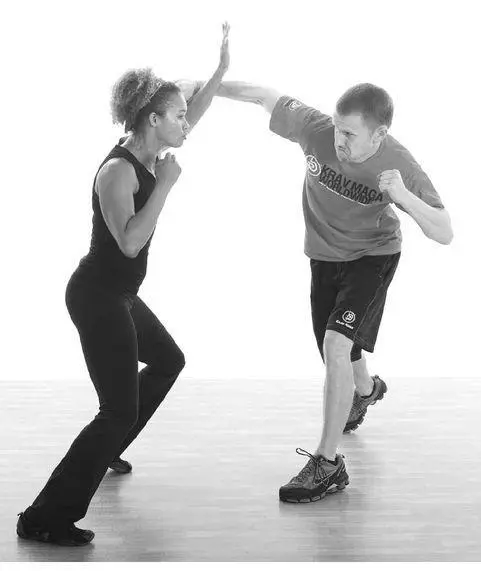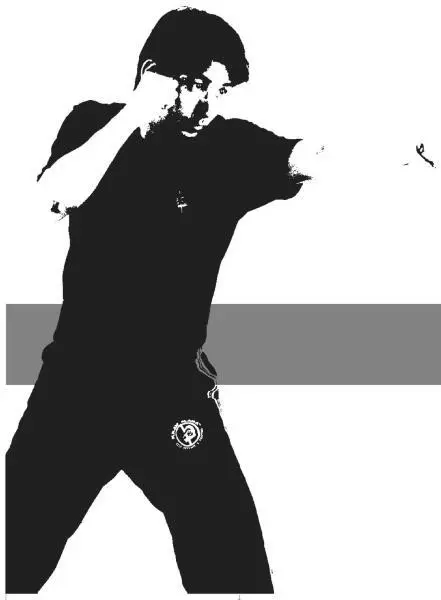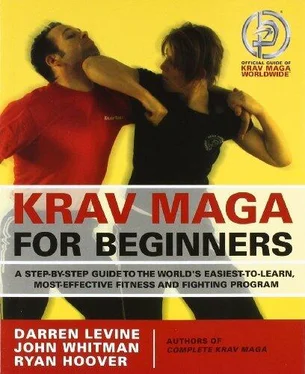Remember, any kind of sexual assault is NOT the fault of the victim. A woman who is attacked is not responsible for an assailant’s actions if she doesn’t look like a female mixed martial arts champion. He is at fault for assaulting the woman. Carrying yourself with confidence and remaining aware of your surroundings will not decrease your chances of being attacked to zero, but it will turn the odds in your favor.
Trust your instincts
If a person or situation gives you a bad feeling, listen to that feeling. Leave the person, leave the situation, leave the area. Most people (and women more than men) are socially conditioned to avoid embarrassing or insulting other people.
Let’s ask this question: Imagine you step onto a lonely elevator at night. The elevator moves one floor, and when the door opens, a man walks in. Immediately, you feel uncomfortable. You’re not sure why, but something about him puts you on edge. What would you do?
The safest thing to do is to exit the elevator immediately, even if that means pushing through the door before it closes, or immediately pushing the button for the next floor and getting off.
Most people will avoid doing this because it publicly displays your opinion of the stranger. It’s potentially insulting to him, and we’re taught to avoid intentionally insulting strangers in public situations.
But so what? We need to be more concerned about our own safety than the potential insult to a stranger. We’re not harming him in any way. No real damage is done. But if we stay on the elevator, and it turns out our instincts were correct, then we have put ourselves in danger.
Listen to your instincts. Make trusting your instincts more important than a stranger’s opinion of you.
Stranger behavior
In the scenario above, we included no clues as to why the man put us on edge. We just had an instinctive feeling. He made us uncomfortable. But often, in the moments that precede assaults, there are indicators: men who strike up and then pursue an obviously unwanted conversation; men who stand too close; men who stare.
Whole books have been dedicated to topics like this (one that we highly recommend is Gavin de Becker’s The Gift of Fear ). It is beyond this book’s capacity to go into great detail about these sorts of behavior. We can, however, summarize the topic into one simple, absolute, and understandable concept:
Men who mean you no harm go out of their way not to make you uncomfortable.
A socially attuned man getting in the elevator with you will automatically stand as far from you as possible, and make himself as unobtrusive as he can. A man walking behind you on a lonely sidewalk will almost always slow down, or alter course so that he is not directly at your back. A man passing you in a darkened parking lot on the way to his car will shy away from you, giving you space, as if to indicate that he is definitely not coming your way.
We all do these things without giving them much thought because we are operating under the same social contract together. Rapists and other attackers are not. They are either unaware of the discomfort they cause, or they enjoy it. The moment a man shows willingness to make you uncomfortable, he is telling you that his intentions are not normal. We can’t say for sure that he’s a rapist or that he’s going to assault you (for all we know, he may be an insurance salesman desperate to make one final sale), but he has some sort of intention toward you, and you are right to be on your guard.

Physical training
All the techniques in this book work. All of them have been performed on the street, under stress, by someone just like you. But techniques are worthless if you don’t apply them aggressively and decisively, determined to do whatever it takes to drive off your attacker. Although we encourage you to learn the actual techniques in this book and train yourself to apply them cleanly under stress, the truth is that developing a strong fighting spirit is more important. Fighting spirit without technique does some good. Technique without fighting spirit is meaningless.
Put yourself through some of the drills mentioned in this book, or find a local Krav Maga school (if one isn’t available, try any school that teaches real, practical, reality-based self-defense) and go through stress drills.
If you think you’re not the aggressive type, you’re wrong. We can say that without even meeting you. Everyone has some aggressiveness in them. Maybe you can’t rouse yourself to defend yourself. Then imagine your daughter, son, or mother being attacked. Imagine what might happen to someone you love if you do not stop the assailant. Fight for yourself. Fight for someone else. But whatever you do, fight.

KRAV MAGA BASICS

Before you can begin studying Krav Maga, you must prepare your body for the work at hand. We’d like you to keep in mind two of the most basic Krav Maga principles.
Krav Maga Principle #1: Go home safe. This principle applies equally to your workout and training in Krav Maga as it does to surviving a violent street confrontation—so warm up and go home safe.
Krav Maga Principle #2: Safety in training. When we train in Krav Maga, we train with realistic scenarios and intensity. If your body is not prepared for the demand you place on it or you have an unsafe training environment, you may get injured, which violates Krav Maga Principle #1. We do not violate principles, so warmeth thyself up!
This section incorporates three different warm-up methods: shadowboxing, joint mobilization, and preparation movements.
1. Shadowboxing
The first goal of this warm-up is to elevate your core body temperature and prepare you physically and mentally for training. The increased core temperature will decrease your risk of injury and improve your performance. Fighting is dynamic and requires the ability to move your body from point A to B. Accordingly, your warm-up must be dynamic as well.
Shadowboxing is one of the best ways to warm up the body and simultaneously work on movement, a necessary fighting skill. It also hones dynamic stability/balance and muscular coordination/strength. When you move in a fighting stance, you must keep a balance between your ability to move quickly and your stability for counterattacks. The goal is to maintain a proper stance each and every time you move your feet. This takes practice, which is why we use basic shadowboxing and movement as a warm-up. Start with a leisurely pace and slowly add techniques, speed, and movement to increase the difficulty. Please refer to page 64 for detailed description of basic stances and movement.
2. Joint Mobilization
This warm-up will also increase the dynamic flexibility and range of motion of your joints and muscles, preparing your body for the upcoming Krav Maga techniques. By using exercises and movement patterns that mimic the movements in Krav Maga, you receive all the benefits of a traditional warm-up with the added benefit of repetition of basic movement patterns.
3. Preparation Movements
Читать дальше















